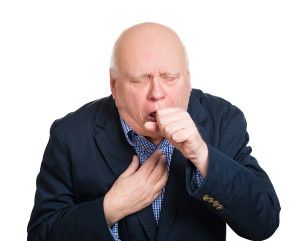Introduction
Laryngitis is an inflammatory condition of the lining of the larynx, particularly the vocal cords. This is most often caused by a viral infection of the upper respiratory tract. But diseases like measles, diphtheria, whooping cough (pertussis) and influenza can also cause this. It can coexist with another infectious process further below the larynx, such as bronchitis or pneumonia.
Finally, it can be caused by chemical irritants or cigarette smoke that was inhaled, or it can be part of an allergic reaction where the lining of the vocal cords swells as a result of histamine release. Voice overuse from chronic yelling is also common.
Symptoms
Hoarseness of the voice is the hallmark of symptoms of laryngitis. There may be a “raw” feeling in the throat, an irritating tickling causing the patient to want to clear the throat all the time. With more severe inflammation there can be pain with swallowing. With a viral or bacterial cause there can be a fever and lassitude. If there is a lot of swelling of the vocal cords, problems breathing (dyspnea) can develop.
Diagnostic tests
The ENT specialist likely will do an indirect laryngoscopy or a fiberoptic direct laryngoscopy to visualize the vocal cords in cases where laryngitis is chronic. A greyish membrane may indicate diphtheria. Voice strain often leads to papillomatous changes that are easily diagnosed by laryngoscopy. Occasionally throat cancer may be found, particularly in a smoker.
Treatment
As most cases of laryngitis is viral in origin, treatment consists in symptomatic treatments only. Frequent steam inhalations with hot water steam helps to alleviate the urge to clear the throat and avoids further irritation of the vocal cords by coughing. Voice rest for 2 or 3 weeks is also very helpful to allow the swelling of the vocal cords to subside. When there is acute or chronic bronchitis present at the same time as laryngitis, then antibiotic therapy would be indicated. Usually a course of amoxicillin or tetracycline for 10 to 14 days might be needed. However, if there is no improvement, sputum cultures may be required to test for antibiotic resistance and the antibiotic may have to be switched depending on the test result (Ref.6,p.693).
References
1. The Merck Manual, 7th edition, by M. H. Beers et al., Whitehouse Station, N.J., 1999. Chapter 161.
2. TC Dixon et al. N Engl J Med 1999 Sep 9;341(11):815-826.
3. F Charatan BMJ 2000 Oct 21;321(7267):980.
4. The Merck Manual, 7th edition, by M. H. Beers et al., Whitehouse Station, N.J., 1999. Chapter 43.
5. JR Zunt and CM Marra Neurol Clinics Vol.17, No.4,1999: 675-689.
6. The Merck Manual, 7th edition, by M. H. Beers et al., Whitehouse Station, N.J., 1999. Chapter 162.
7. LE Chapman : Antivir Ther 1999; 4(4): 211-19.
8. HW Cho: Vaccine 1999 Jun 4; 17(20-21): 2569-2575.
More references
9. DO Freedman et al. Med Clinics N. Amer. Vol.83, No 4 (July 1999): 865-883.
10. SP Fisher-Hoch et al. J Virol 2000 Aug; 74(15): 6777-6783.
11. Mandell: Principles and Practice of Infectious Diseases, 5th ed., © 2000 Churchill Livingstone, Inc.
12. Goldman: Cecil Textbook of Medicine, 21st ed., Copyright © 2000 W. B. Saunders Company
13. PE Sax: Infect DisClinics of N America Vol.15, No 2 (June 2001): 433-455.
14. David Heymann, MD, Editor: Control of Communicable Diseases Manual, 18th Edition, 2004, American Public Health Association.







